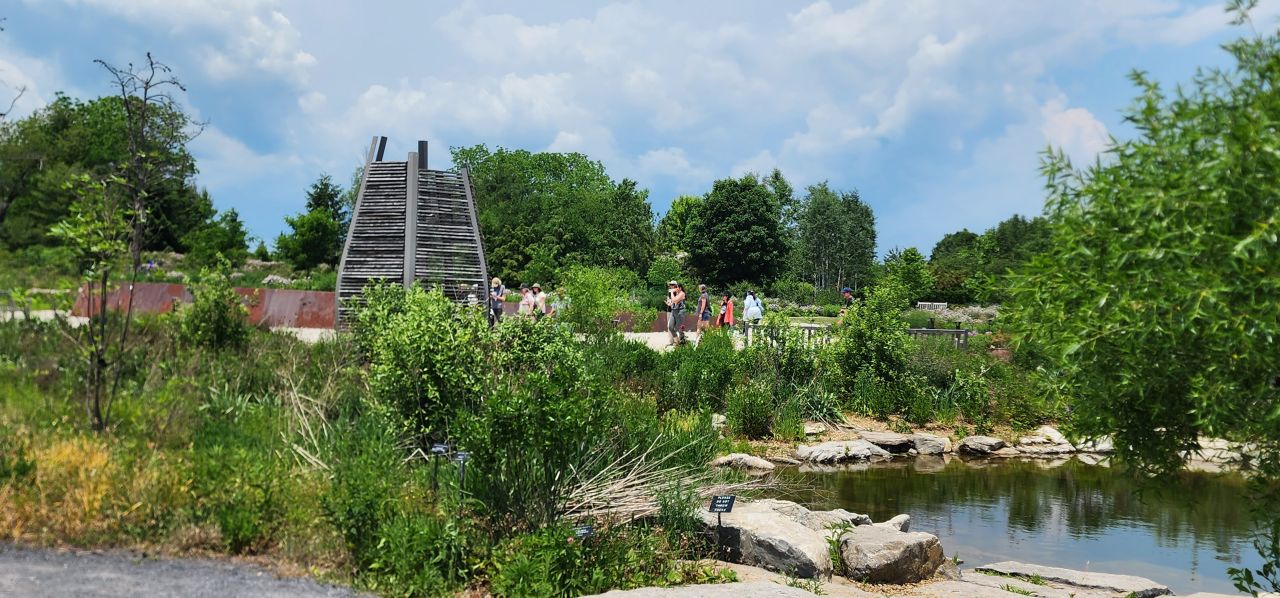July 03, 2024
Arboretum at Penn State’s Pollinator and Bird Garden wins international award
Sustainable landscape architecture prize recognizes synthesis of science, design.

The Pollinator and Bird Garden at the Arboretum at Penn State combines multiple goals: supporting pollinator diversity, creating beauty, and serving institutional goals of research, teaching and learning. Its more than three acres include a bird blind and a honey bee observation hive.
This article was originally published July 3, 2024 in Penn State Today.
The Arboretum at Penn State has been recognized with an international award for sustainable landscape architecture for its Pollinator and Bird Garden.
The garden was awarded the A+ International Jury Award for Sustainability for Landscapes by Architizer, an online platform for architects and designers.
“This is well-deserved recognition,” said Harland Patch, director of pollinator programming at the Arboretum and assistant research professor for the Penn State College of Agricultural Sciences, who was part of the team that created the garden. “The garden is unique in that it puts together habitat design and design that is accessible and beautiful to humans with a very diverse mix of plants, many of which you will not see in any other garden.”
H.O. Smith Endowed Arboretum Director Casey Sclar stressed the importance of pollinators to Pennsylvania agriculture, the state’s biggest industry, which supports 593,000 jobs and contributes $132.5 billion to Pennsylvania’s economy every year.
"This garden is a living laboratory dedicated to Penn State's 21st-century land-grant mission,” Sclar said.
The pollinator garden, which spreads over more than four acres, was designed to attract both resident and migratory birds and insect pollinator species and to serve as a site for scholarly research and educational activities. It contains extensive beds of pollinator- and bird-friendly plants, water features, beehives, agricultural beds and an orchard.
The garden was created “from the science up,” Patch said. “All the plants and all the other features have their basis in scientific research. The garden combines multiple goals: to support all the pollinator diversity that lives in this part of Pennsylvania, to create something truly beautiful to humans, and to reach our institutional goals of research, teaching and learning.
“We wanted — and needed — to bring all the recent ecological science to the gardening community and to landscape design.”
Emmanuel Didier, creative director of Didier Design Studio and lead designer of the project, said it is rewarding to be recognized for a project that provides a sense of solution to some of the ecological threats causing pollinator decline and insect apocalypse.
“That sense of hope with it is just beautiful,” he said.
The garden is sculpted and graded to emulate the ridges and valleys of the surrounding Pennsylvania countryside, with a variety of micro-terrains such as open meadows, gradual slopes, steep inclines, forested ridges and water-collecting swales.
No model existed for a pollinator garden of this scale, Didier said. He worked closely with Penn State researchers, designers Claudia West of Phyto Studio and Matt Wallace of Lake Flato, Derek Kalp of Penn State's Office of Physical Plant, and Shari Edelson, former horticulture and operations director of the Arboretum, to create a successful habitat for pollinators and birds.
Architizer said its sustainability awards were created “to amplify the ideas of architects whose projects act as positive precedent for green building practices.”
